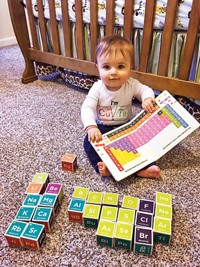Advertisement
Grab your lab coat. Let's get started
Welcome!
Welcome!
Create an account below to get 6 C&EN articles per month, receive newsletters and more - all free.
It seems this is your first time logging in online. Please enter the following information to continue.
As an ACS member you automatically get access to this site. All we need is few more details to create your reading experience.
Not you? Sign in with a different account.
Not you? Sign in with a different account.
ERROR 1
ERROR 1
ERROR 2
ERROR 2
ERROR 2
ERROR 2
ERROR 2
Password and Confirm password must match.
If you have an ACS member number, please enter it here so we can link this account to your membership. (optional)
ERROR 2
ACS values your privacy. By submitting your information, you are gaining access to C&EN and subscribing to our weekly newsletter. We use the information you provide to make your reading experience better, and we will never sell your data to third party members.
Science Communication
Newscripts
The chemistry of quilting and a rapid-fire carbon game
by Andrea Widener
August 21, 2022
| A version of this story appeared in
Volume 100, Issue 29
Quilt your PhD

Since she was in middle school, Macy Sprunger has been interested in both crafting and chemistry. “I just like to have outlets that are separate from my studies,” Sprunger, a chemistry graduate student at Washington University in St. Louis, tells Newscripts. “I like to have a distraction and time to think about something else.”
Her specific interest in quilting intensified during the pandemic, when she was often stuck at home. Rather than making quilts to give as gifts, she started making them for herself—just because she thought they were pretty. “I found a good community in quilting as well,” she says, especially on Instagram, where her handle is @Macys_Makes.
As she quilted through COVID-19, Sprunger started thinking about how to showcase her doctoral work on a quilt. “PhDs are a lot of work, and I wanted something to remember it,” she says. “Quilts are a great little way to do that for me.” It was also the first time she designed and created a quilt from scratch.
How to represent her years of hard work on a quilt wasn’t straightforward, though. Sprunger studies the protein MATR3, which is implicated in amyotrophic lateral sclerosis (ALS). But the protein doesn’t have much structure, and just showing its amino acid sequence didn’t sound interesting.
As she was writing her first big paper (iScience 2022, DOI: 10.1016/j.isci.2022.103900), Sprunger realized she could take the paper’s figures and turn them into quilt blocks. “The shapes represent the data and the work,” she says. “And that idea was exciting.”
The top half of the quilt highlights Sprunger’s efforts to create a yeast model of the protein, including a map of where the mostly unstructured protein is folded, a Western blot, and three budding yeast cells showing the different phenotypes she created. The bottom half—well, we can’t talk about that quite yet. “Technically, parts on it are unpublished data,” she says.
When her adviser and lab mates saw it, they were impressed. She expects to display it at home and to bring it out when she’s defending within the next year to remind herself of all she has accomplished.
Sprunger spent probably 75 h working on the quilt. She purposely took it slow and tried to enjoy the process rather than rushing. She reminded herself, “My PhD is a big deal. We’re going to enjoy this one.”
Texas Carbon or bust

Taking it slow is the opposite of how you should play Texas Carbon, the newest offering from d-Orbital Games. Newscripts has chatted with owner and Chapman University visiting assistant professor Zach Thammavongsy before about his company, which creates chemistry games primarily for education.
The goal of Texas Carbon is to be the first to identify how many carbon atoms have one extra bond—five instead of four—which Thammavongsy says is called a Texas carbon because everything is bigger in Texas. Adding an extra bond is a common mistake students make when learning to draw carbon structures, he says.
“It definitely is a very fast-paced game. I call it a quick-draw game,” Thammavongsy says. Players rush to identify the number of errors on a card the fastest. “Students have a competitive spirit,” he says. They can go through all 48 examples in the game in about 15 min. The examples are all drug molecules from top pharmaceuticals. “We’re not just looking at structures willy-nilly. They’re actually important structures that are saving people’s lives.”
Thammavongsy says Texas Carbon helps students learn what doesn’t look quite right. “Hopefully, they’ll catch their own mistakes when they go and take a test.”
Please send comments and suggestions to newscripts@acs.org.





Join the conversation
Contact the reporter
Submit a Letter to the Editor for publication
Engage with us on Twitter